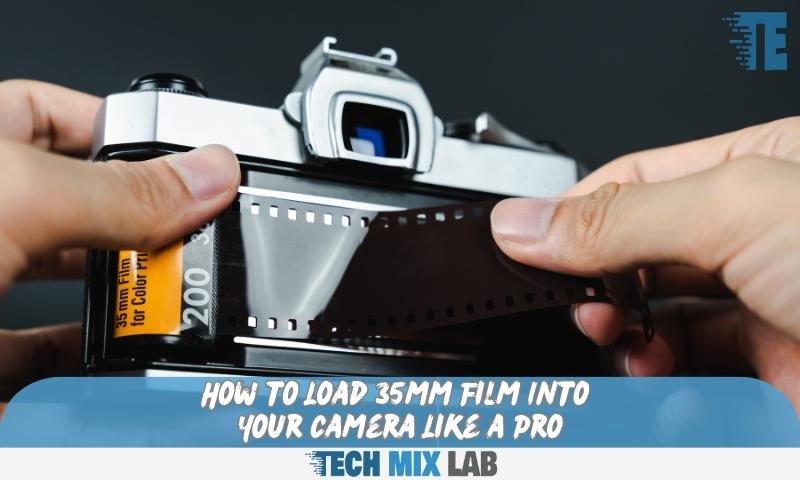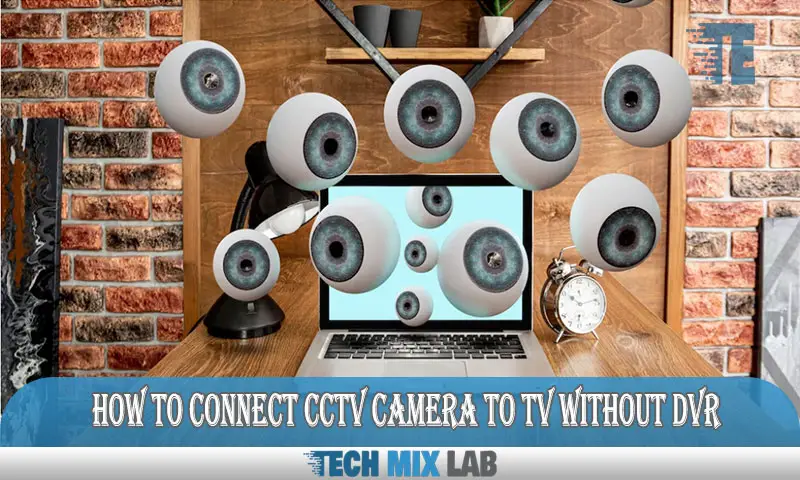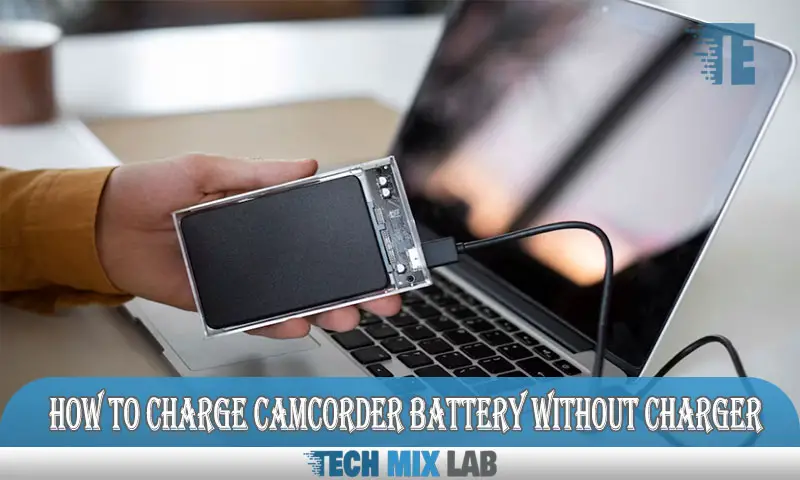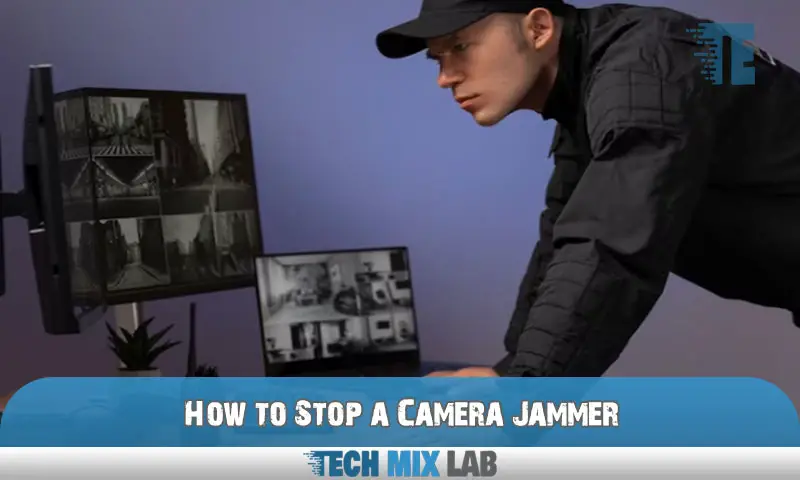Shooting on 35mm film can seem daunting if you’ve never done it before. But loading film into your camera doesn’t have to be scary! With some practice and the right techniques, you can load 35mm like a pro in no time. In this blog post, I’ll walk you through the entire process step-by-step. You’ll learn how to properly handle film, identify important parts of your camera, thread the film correctly, secure it in place, set the ISO, and advance to your first frame. Following these tips will give you the knowledge and confidence to load 35mm film into any camera. You’ll be capturing beautiful film images in no time while avoiding common mistakes beginners make. Let’s get started!
Choosing The Right 35Mm Film For Your Camera
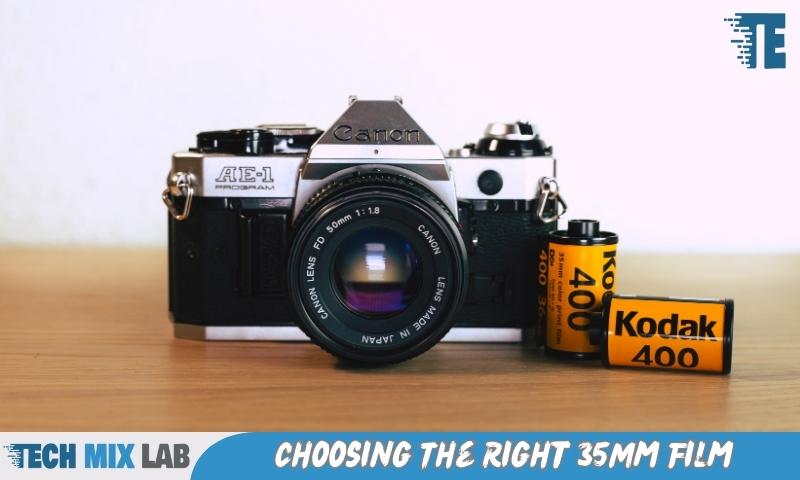
Choosing the right 35mm film for your camera involves considering various factors. First, determine the film speed suitable for your intended shooting conditions. Next, consider the film type, such as color negative, black and white, or slide film, based on your artistic preferences.
Additionally, take into account the film’s grain size and its impact on the final image quality. Moreover, consider the film’s brand reputation and compatibility with your camera model. Lastly, evaluate your budget and the cost-per-roll of the film. By carefully considering these factors, you can select the ideal 35mm film that suits your creative vision and technical requirements.
Remember to try different films to explore different aesthetics and enhance your photography skills.
Understanding The Different Types Of Film
Understanding the different types of film is essential for loading 35mm film into a camera. The first type, iso film, determines the film’s sensitivity to light. The color film captures vibrant and lifelike hues, while the black and white film offers a classic and timeless aesthetic.
Each type has its own unique characteristics, allowing photographers to express their creativity. When loading the film, make sure to follow the camera’s instructions carefully to avoid any mishaps. Remember to handle the film with care to prevent damage or exposure.
By understanding the different types of film and properly loading them into the camera, photographers can capture stunning and memorable shots. So, let’s delve into the nuances of film and master the art of loading 35mm film!
Preparing Your Camera For Film Loading
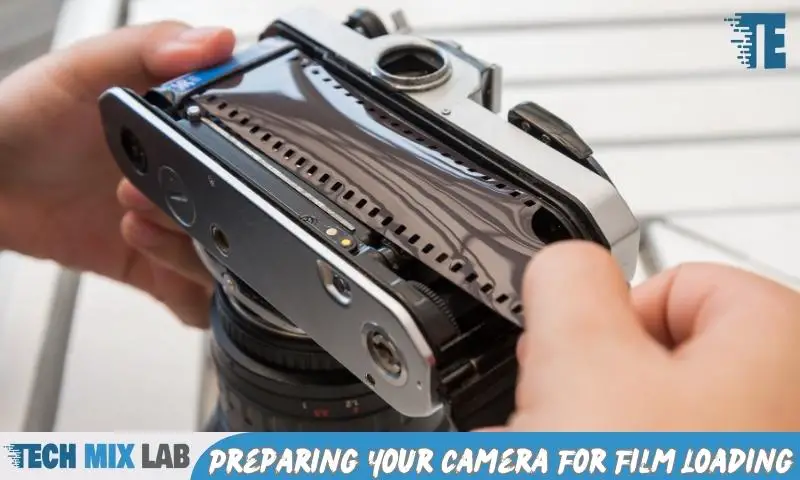
Preparing your camera for film loading involves checking the settings and condition of the camera. Start by ensuring that the camera is turned off and the lens cap is removed. Check if the battery has enough power and insert a fresh roll of 35mm film.
Open the camera back and make sure the film compartment is clean and free from any debris. Align the film leader with the film take-up spool and wind it until it is securely attached. Close the camera back and gently advance the film until the first frame marker aligns with the film counter.
Double-check the settings, such as ISO, shutter speed, and aperture, to make sure they are appropriate for your desired photography. Once everything is in order, you are ready to start capturing beautiful moments with your loaded 35mm film camera.
Loading The Film Spool Onto The Camera
Loading the film spool onto the camera is a straightforward process that requires a few simple steps. First, locate the film compartment on the camera body. Open it carefully, without force. Insert the empty film spool into the designated slot, ensuring it fits securely.
Then, take the film roll and attach it to the empty spool, making sure the film is aligned properly. Wind the film onto the receiving spool using the knob or lever provided. Be cautious and avoid overexposing the film to light.
Once the film is securely loaded onto the spool, close the compartment door. Now, the camera is ready to capture moments on the loaded 35mm film, preserving memories with clarity and precision. Enjoy your photography experience!
Inserting The Film Spool Correctly
Inserting the film spool correctly is essential to ensure proper alignment and tension. Begin by locating the film compartment. Attach the start of the film to the empty spool carefully. Wind the film onto the take-up spool while maintaining gentle tension.
Make sure the film sprocket holes align with the camera’s sprockets. Insert the loaded spool into the film compartment, ensuring it fits securely. Close the film compartment and advance the film to the first frame. Following these steps will guarantee smooth film loading and optimal image capture.
Enjoy your photography journey with perfectly loaded 35mm film in your camera.
Advancing The Film To The First Frame
Advancing the film to the first frame is a crucial step in loading 35mm film into a camera. To ensure smooth loading, here are some tips to avoid any issues. Begin by gently turning the film advance lever until it stops.
Make sure the film sprocket holes are aligned with the sprockets in the camera. With a firm grip on the rewind knob, press it in and turn it clockwise to engage the film. Continue advancing the film until the frame counter reads “1” or the film leader peeks out of the camera.
Be careful not to skip frames or exert excessive force on the film. By following these guidelines, you can confidently load your 35mm film and start capturing moments with your camera.
Closing The Camera After Loading Film
Closing the camera after loading the film is an essential step to avoid light leaks. To secure the back cover, first, ensure that the film is properly loaded and the rewound end is snugly tucked. Gently close the back cover, ensuring it aligns perfectly with the camera body.
Listen for the satisfying click that indicates it’s securely closed. Take a moment to inspect the back cover for any gaps or loose ends that may allow light to seep in. Address any issues before you start shooting. By following these steps, you can ensure that your film remains protected from unwanted light leaks and that your photos turn out exactly as you envisioned.
Whether you’re a beginner or an experienced photographer, attention to detail when closing the camera is paramount.
Settings For Optimal Film Exposure
To load 35mm film into your camera, start by understanding the optimal settings for film exposure. Begin by ensuring that the correct ISO setting is selected. This will determine the sensitivity of the film to light. If shooting in low light conditions, increase the ISO value for better results.
On the other hand, for bright conditions, decrease the ISO setting. Additionally, consider adjusting the exposure compensation according to the scene’s brightness. This will help you achieve accurate exposure. Keep in mind that overexposure can lead to washed-out photos, while underexposure can result in dark and unclear images.
So, it’s crucial to experiment with exposure compensation to find the right balance. By following these guidelines, you’ll be on your way to capturing stunning photos with your 35mm film camera.
Troubleshooting Common Film Loading Problems
Loading 35mm film into a camera can sometimes result in frustrating problems. Film jams can occur, causing delays and frustration for photographers. To handle these issues, it’s important to approach them with patience and a steady hand. Gently easing the stuck film out of the camera can often resolve the jam.
Additionally, carefully checking the film path and ensuring it is properly aligned can prevent future problems. It’s also crucial to handle the film with clean hands to avoid damaging it or causing scratches. Taking these troubleshooting steps will help photographers smoothly load their 35mm film and capture great shots without any hiccups along the way.
Final Tips For Loading 35Mm Film Like A Pro
Loading 35mm film into a camera like a pro requires careful adherence to these guidelines. Start by familiarizing yourself with the film and its correct orientation. Make sure to align the film with the camera’s sprockets for smooth winding. Avoid overstretching the film during loading to prevent damage.
Keep a steady hand to ensure it remains taut and properly threaded. Double-check that the film is securely latched before closing the camera. Lastly, advance the film to the first frame by gently winding it. By following these steps, you can confidently load 35mm film into your camera and capture stunning shots.
Remember, practice makes perfect. So keep trying until you master this essential skill.
FAQ
How Do You Load 35Mm Film Into A Camera?
To load 35mm film into a camera, open the camera back, insert the film cartridge, pull the film leader across the film plane, and wind it onto the take-up spool. Close the camera back, advance the film, and you’re ready to start shooting.
What Is The Correct Way To Load Film Into A Camera?
The correct way to load film into a camera is to ensure a clean and dry environment, handle the film cartridge carefully, align the film leader with the camera’s film track, advance the film slowly, and close the camera securely.
Are There Any Tips For Loading 35Mm Film Into A Camera?
Yes, here are a few tips for loading 35mm film into a camera: Avoid direct sunlight when loading film, make sure your hands are clean and dry; practice loading and unloading film in a safe environment before going out to shoot; and always double-check that the film is winding properly before closing the camera back.
Conclusion
To successfully load 35mm film into your camera, it is essential to follow the correct steps. By understanding and implementing the process, you can ensure that your film is loaded properly and ready to capture those precious moments. Start by determining the film format and unlocking the camera back before carefully aligning the film leader with the take-up spool.
Next, advance the film until it is securely attached, making sure to avoid touching the emulsion. Once the film is in place, close the camera and advance the film until the first frame is visible. Remember to advance the film after each shot and rewind it completely once you finish shooting.
By practicing these techniques and developing a routine, you can confidently load 35mm film into your camera with ease and enjoy the process of analog photography.

